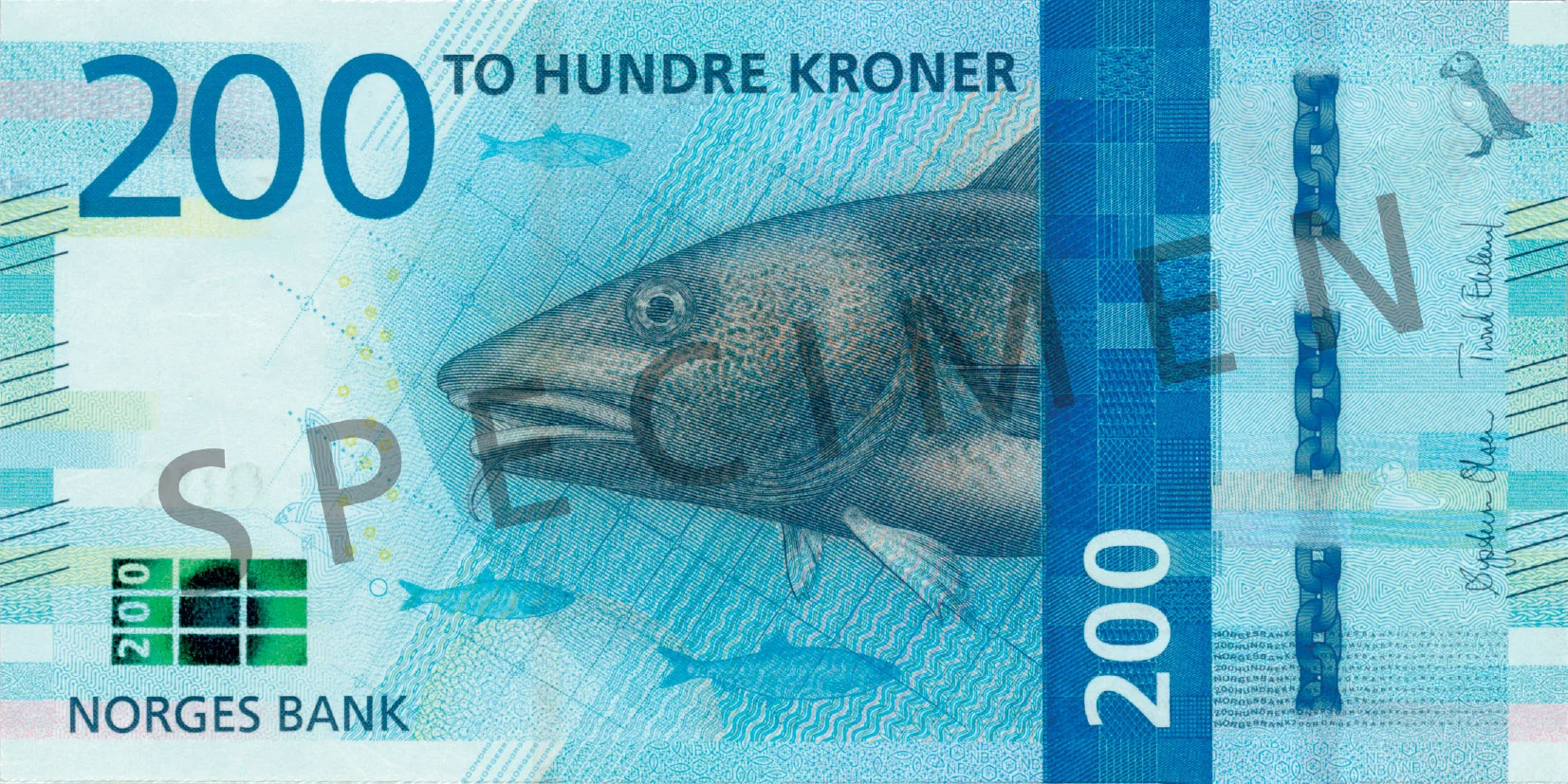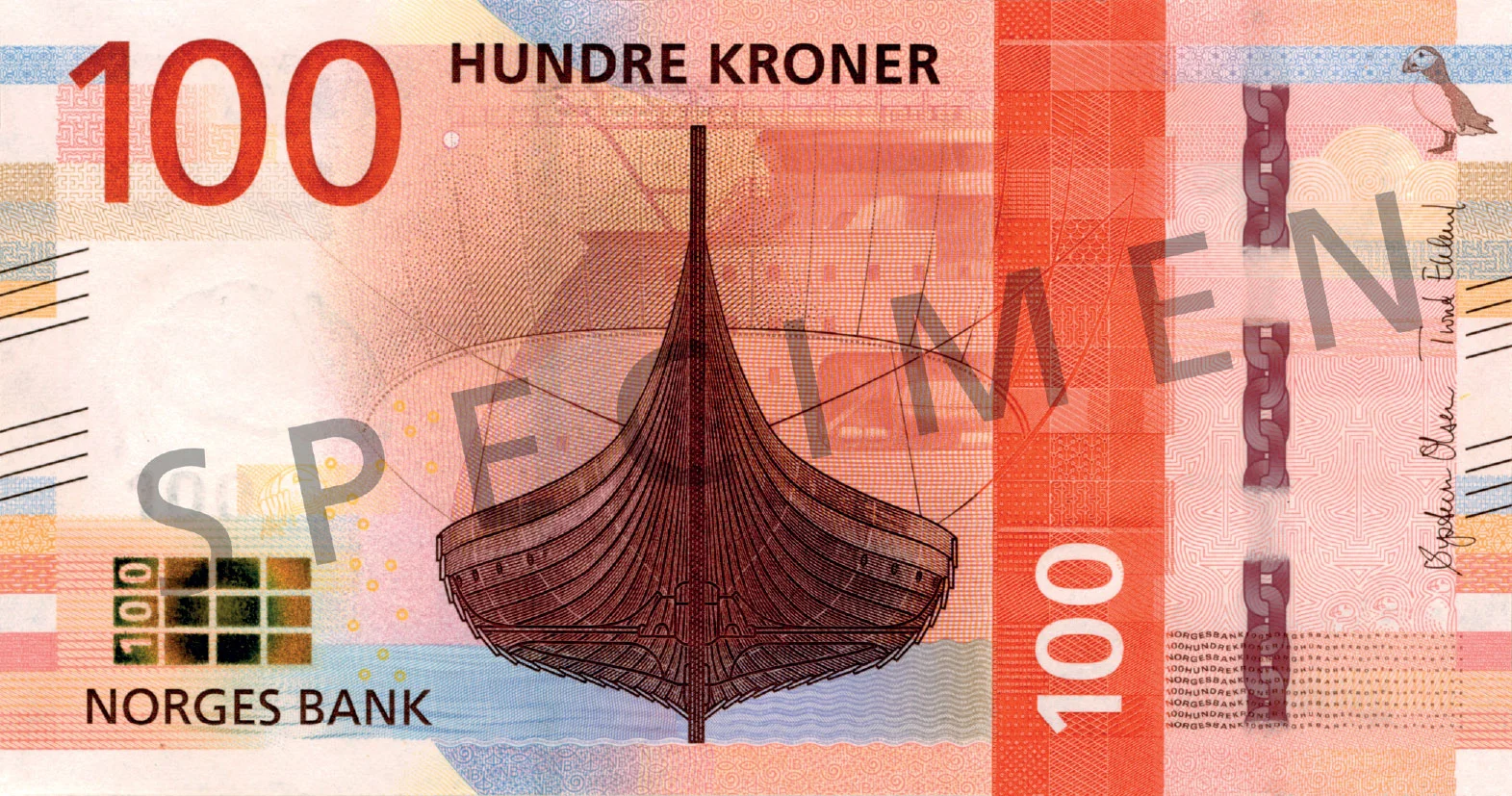
Banknote and currency manager of the year: Norges Bank
Nordic central bank has redefined how its banknotes are designed

When Norges Bank started drafting plans for a new banknote series back in 2012, no-one could have predicted governor Øystein Olsen would appear in a cameo role alongside three men dressed in yellow raincoats holding fish in a promotional music video. But it perhaps should not have come as a surprise, since staff at the Norwegian central bank also adopted a philosophy to break many design principles as they set about introducing a new series of banknotes.
While Norway does not have – and never has had – a systemic counterfeit problem, its previous series of notes was beginning to show signs of age, in terms of security. “Our counterfeiting numbers were low, but our neighbouring countries were renewing their banknotes to increase security, and we had to follow suit,” says Trond Eklund, director of Norges Bank’s cashier’s department. “Confidence is the cornerstone of the monetary system and we need the public to be confident in our banknotes.”
When developing the new series, the central bank first had to decide whether it would develop the existing Nkr50 billion ($6.3 billion) designs already in circulation or start from scratch.
“The total costs could have been slightly lower if we had decided to further develop the existing series,” says Leif Veggum, assistant director of the cashier’s department. “But after having test-printed different versions, we concluded that the results were not optimal.”
A new series, then – but where to start? The most important milestone for the central bank was picking an overarching theme for the banknotes, a challenge Norges Bank’s banknote team had never faced before. Previous series of Norwegian banknotes had trended towards portraits and individual themes. “It is often said banknotes are a kind of business card for the country, so we had to get it right,” Eklund tells Central Banking.
The banknote department decided upon the theme of ‘the sea’ relatively quickly. “The ocean has always [shaped] – and will continue to shape – the identity of our nation, and so it was a natural choice for us,” says Eklund. Five banknotes were to be printed, so five subthemes were created to aid the design process of juxtaposing how the sea has brought economic prosperity to the Nordic nation.
Pioneering design
In 2013, Norges Bank’s in-house design team ironed out some of the key details. The main colours of the notes would not change, and cotton would remain the substrate. A decision was also taken to make all the notes the same height, in an effort to reduce paper. Tactile marks for the visually impaired were also incorporated into the design brief.
Departing from traditional practices once again, the central bank then invited the public to submit designs for the new series. 70 designers put forward designs for the new notes, eight of which were selected and presented before the central bank’s board for judging.
“We had done this before in the 1920s, and again in the 1950s, but the designs submitted were impossible to use, so this was a big risk for us,” says Arild Yttri, a banknote designer at Norges Bank. “We were pleasantly surprised.”

A design from Oslo-based Metric Design was chosen for the front of the banknotes. “It was a very Nordic, open, light design that still kept to the established banknote aesthetic we wanted to keep,” says Yttri. “Although it was a dramatic change from portraits, the designs could still be incorporated into the traditional format.”
Banknote designs tend to be based on simple pictures. Some, such as Swiss banknotes, are drawn using computer-aided design tools. Norges Bank, on the other hand, has a tradition of converting designs freehand into line drawings. For the Nkr100 note, one of the two banknotes to be released into circulation in 2017, former Norges Bank banknote designer Sverre Morken was brought in to convert Metric’s longboat design. “Banknotes are a form of graphic art,” says Morken. “I spent around 160 hours drawing the design.”
But while the fronts of the notes are steeped in tradition, the reverse sides of the notes tell a very different tale. “When we were deciding what the back of the banknotes would look like, we decided not to use Metric’s proposed design. Instead, we used the proposed fronts from [architecture studio] Snøhetta. In this way, we formed a combination of traditional and modern expression,” says Eklund. Through experimentation with other submissions, Snøhetta’s stood out as a clear winner.

This series has redefined how banknotes are designed, and we think it will stand the test of time
Trond Eklund, Norges Bank
“Something magical happened,” says Eklund. Based on the Beaufort scale – the measurement of wind force – the design simulated a pixelated abstract mosaic, with the cubic patterns constructing the coast, the horizon and the motif. Tweaks had to be made to the design in the form of simplifying the blocks and softening the colour in order for it to be converted into line drawings. “This series has redefined how banknotes are designed, and we think it will stand the test of time,” adds Eklund.
Enhanced security features have been integrated into the maritime designs. Metallic and colour-changing holograms have been used to the form of anchor chains and rings symbolising ripples in the water. Meanwhile, puffins appear as watermarks and small images only visible under ultraviolet light. The central bank has also integrated a security thread, micro-lettering, iridescent elements into the banknotes.
Following the design decision, the central bank entered into an intense period of testing with French printer Oberthur Fiduciaire, before large-scale printing could begin. A limited print run of the Nkr100 banknote took place, laying the groundwork for the official note, which entered circulation in May 2017.
Education campaign to match
The Nkr100 note was released alongside the Nkr200 note, which had been given the theme of “The sea that feeds us”, with the cod chosen as the central motif.
“Given the drastic changes to the design, we wanted to ensure our educational material reached as many people as possible. Social media was an efficient means to distribute, but we needed a concept,” says Bård Ove Molberg, senior communications officer at Norges Bank. Video was chosen as the medium.

With more than 200,000 views on YouTube alone and more than 1 million across the central bank’s different communication portals, the central bank’s remake of the famous Norwegian comedy song Torsken kommer (“The cod is coming”) helped springboard the new banknote series into the hearts and minds of people across the globe.
“We did not expect it to become such an international hit! Almost everyone in Norway has a relationship with the original music video, so we decided to remake it using our own information,” Molberg tells Central Banking.
The Central Banking Awards were written by Christopher Jeffery, Daniel Hinge, Dan Hardie, Rachael King, Victor Mendez-Barreira, Iris Yeung, Joel Clark and Tristan Carlyle
Only users who have a paid subscription or are part of a corporate subscription are able to print or copy content.
To access these options, along with all other subscription benefits, please contact info@centralbanking.com or view our subscription options here: subscriptions.centralbanking.com/subscribe
You are currently unable to print this content. Please contact info@centralbanking.com to find out more.
You are currently unable to copy this content. Please contact info@centralbanking.com to find out more.
Copyright Infopro Digital Limited. All rights reserved.
As outlined in our terms and conditions, https://www.infopro-digital.com/terms-and-conditions/subscriptions/ (point 2.4), printing is limited to a single copy.
If you would like to purchase additional rights please email info@centralbanking.com test test test
Copyright Infopro Digital Limited. All rights reserved.
You may share this content using our article tools. As outlined in our terms and conditions, https://www.infopro-digital.com/terms-and-conditions/subscriptions/ (clause 2.4), an Authorised User may only make one copy of the materials for their own personal use. You must also comply with the restrictions in clause 2.5.
If you would like to purchase additional rights please email info@centralbanking.com test test test




